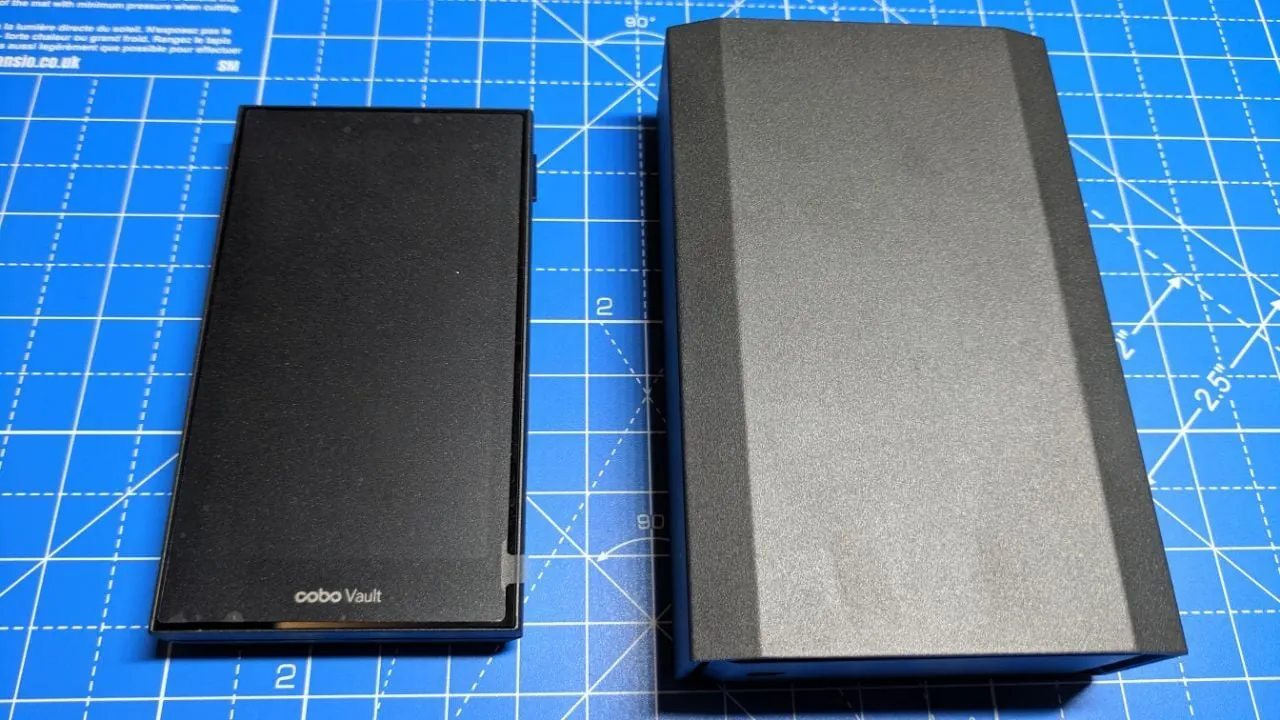In brief
- The Cobo Vault offers industry-leading security against both hacks and damage.
- It features an open-source, FIPS 140-2 secure element and a self destruct function.
- However, it's expensive and only supports a limited selection of cryptocurrencies.
In the more than six years that cryptocurrency hardware wallets have been around, the vast majority have iterated on the same formula.
They almost all feature a compact, minimalist design with two buttons for navigation, and include support for as many cryptocurrencies as possible. Most are designed to be relatively inexpensive and are constructed mostly from plastic.
But not the Cobo Vault.
This high-end cryptocurrency hardware wallet comes with a premium price tag to boot. At $479, the Cobo Vault is one of the most expensive hardware wallets on the market, but it does offer a no-compromises approach to not only security but also protection against physical damage to the device and its recovery phrase. Does its security warrant its price tag? Let's find out.
Cobo Vault Wallet review: Design and build

The Cobo Vault has arguably the best build quality out of any hardware wallet we have tested so far. The device is made from an aerospace-grade aluminum alloy and appears to have been constructed out of a single piece of metal, giving it a sturdy feel that indicates the device is robust enough to withstand the rigors of everyday use.
At 111.8mm x 64mm x 14.6mm, the Cobo Vault is one of the largest hardware wallets on the market, about the size of a small smartphone and weighing in at a somewhat hefty 190g. It's clear that Cobo isn't trying to compete with other devices in terms of portability, though the Vault is still small enough to carry around without too much hassle.
Around the front, the Cobo Vault sports a 4-inch, 640 x 1136px LCD display, while the rear face features a built-in camera and can be removed to reveal a swappable 1,540mah battery. With only a single button used to power the device on and off, the Cobo Vault has a distinctly minimal and industrial aesthetic.
Cobo Vault Wallet review: What's in the box?
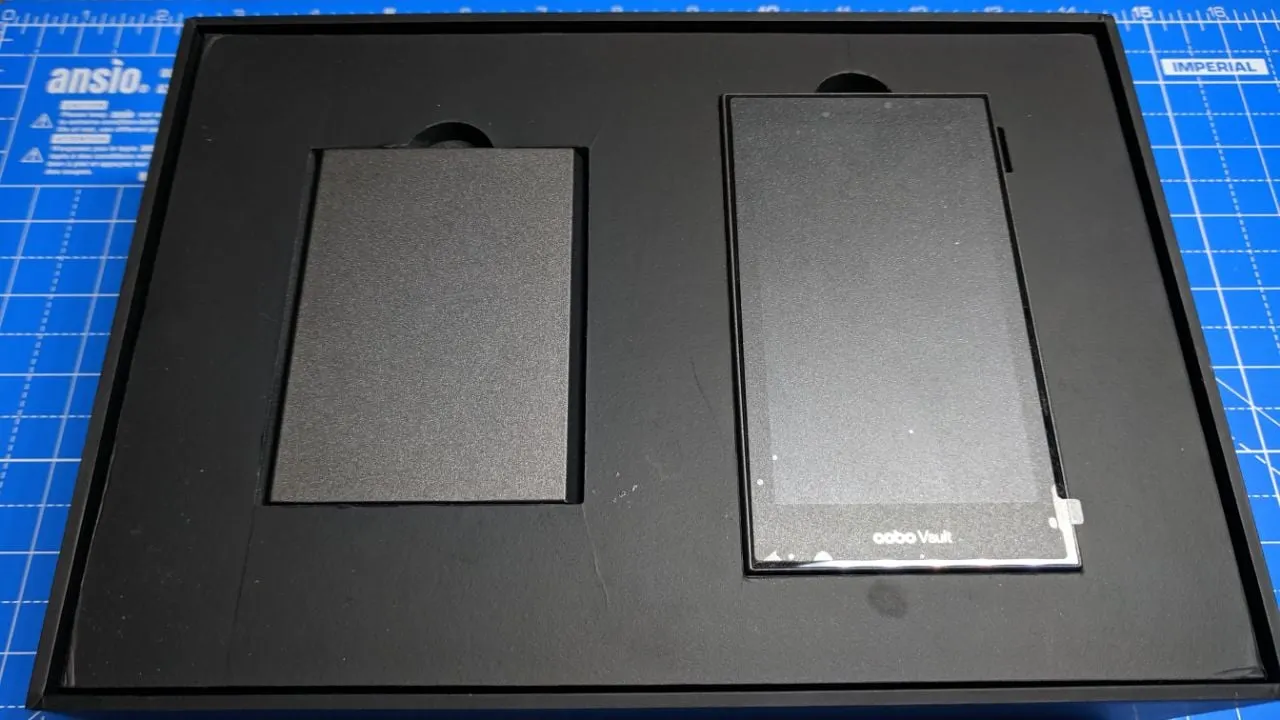
The Cobo Vault's packaging is as bulky as the device itself, with a reassuring heft to it and a tamperproof sticker sealing the contents. Inside, the Cobo Vault unit and its battery are packed separately in rigid foam compartments, with assorted other parts and tools tucked away beneath.
Unlike the paper recovery sheets that come with most hardware wallets, the Cobo Vault ships with a Cobo Tablet metal wallet to store your 12-24 word recovery phrases, as well as letter blocks for each letter of the alphabet. You also get a protective case and charging dock, as well as a 1 meter Cobo-branded USB to USB-C cable.
Lastly, the box also contains a quick guide, warranty card, and mnemonic tablet instruction card, along with a small hexagon key, screwdriver, and replacement screws.
Cobo Vault Wallet review: Getting Started
Getting started with the Cobo Vault is a relatively simple process.
First up, you need to create a new vault on the hardware wallet by generating and confirming a new 24-word mnemonic phrase. Once confirmed, the Cobo Vault will take around 15 seconds to generate the vault.
Then it's simply a matter of selecting which cryptocurrencies you want to use with the device, after which you need to choose a 10-30 character password including upper and lowercase characters, digits and symbols. Finally, you have the option of adding an unlock pattern for additional security.
The next step is to scan your unique QR code in the Cobo Vault mobile app, which syncs the Cobo Vault wallet with the Cobo Vault app.
Cobo Vault Wallet review: Ease of use
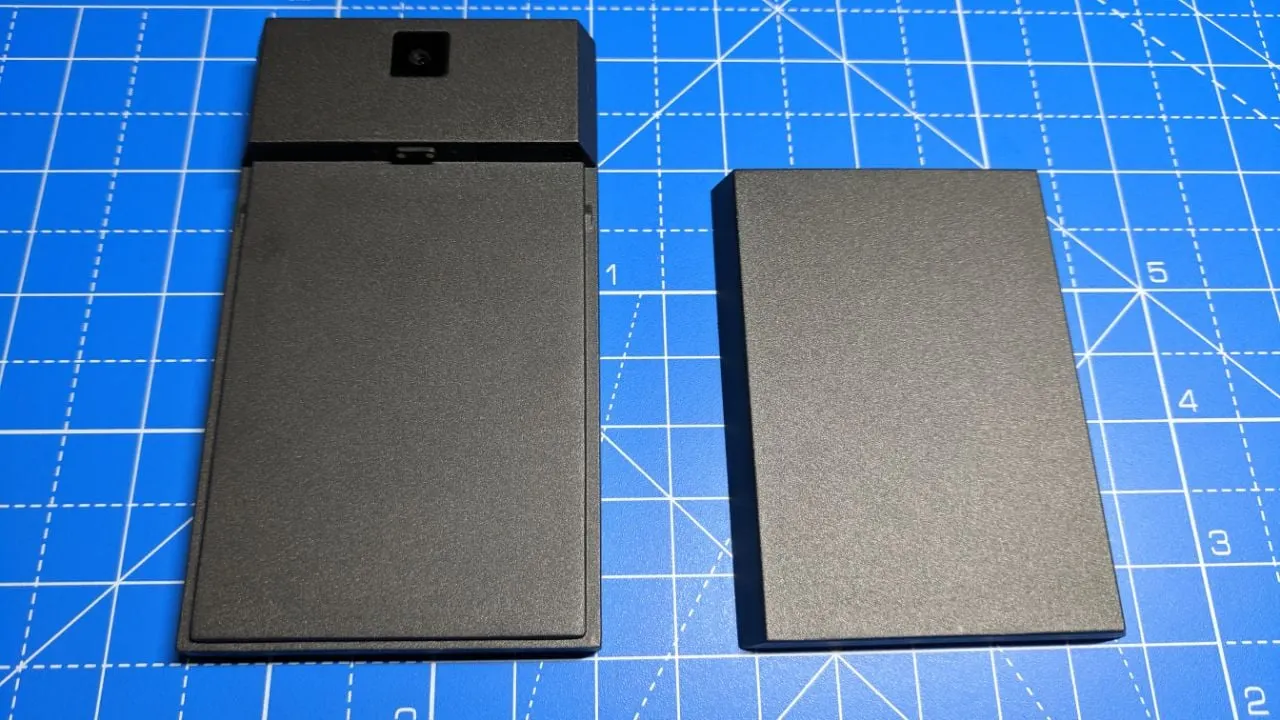
Despite being one of the heftier hardware wallets on the market, the Cobo Vault is also one of the most usable. Thanks to its large color touchscreen, interacting with the device is a simple process, not unlike using an Android mobile device.
Unlike most other popular hardware wallets, the Cobo Vault does not need to be connected to any other device in order to send payments. Instead, wallet users use the device camera to scan QR codes displayed on the associated Cobo Vault app to sign transactions. This is a slightly more involved process than with most other wallets, but it does increase the device's security.
Further boosting its security, the Cobo Vault has no input ports or wireless connectivity; instead, it's updated using a TransFlash (TF) card.
The Cobo Vault has an extremely simple setup process, but it can be a challenge to scan the QR code with the associated mobile app. However, once the device has been initialized, managing cryptocurrencies on the Cobo Vault using the hardware wallet and mobile app is a simple task.
The only downside is the Cobo Vault's relatively slow cold boot time of around 30-40 seconds, after which the device is pretty responsive.
Cobo Vault Wallet review: Features
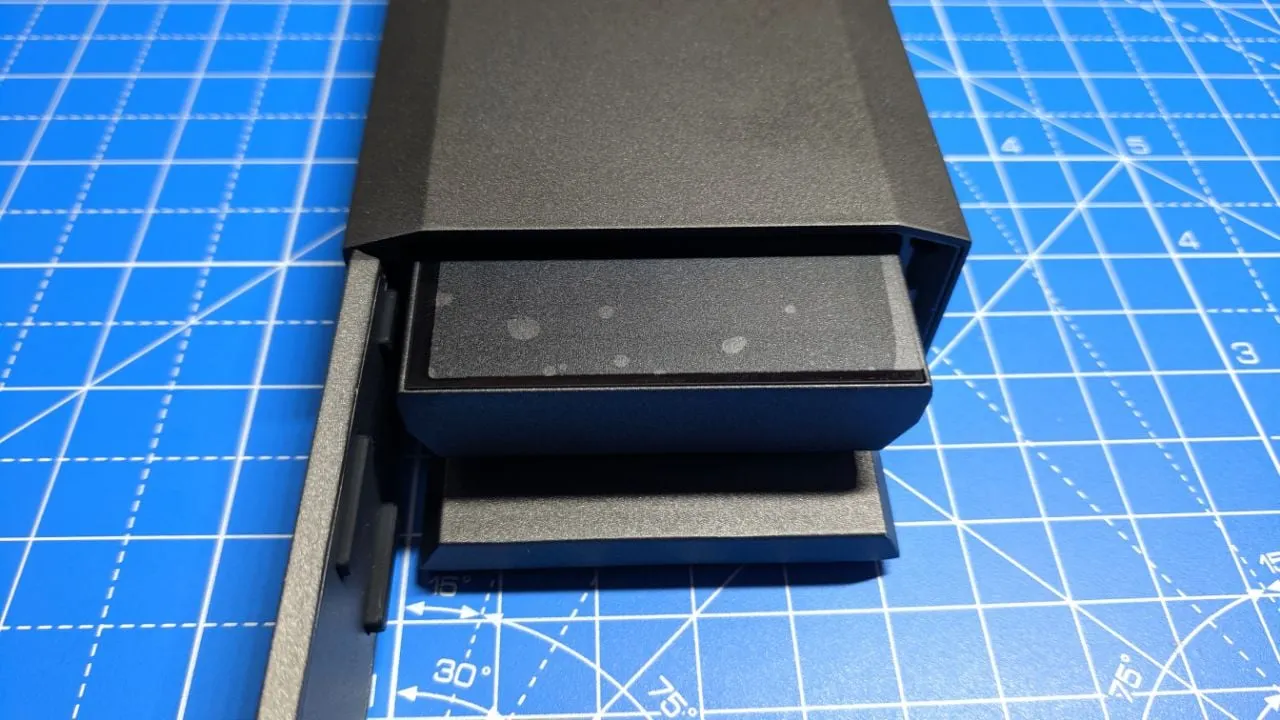
Unlike many cryptocurrency hardware wallets, the Cobo Vault doesn't offer a multitude of additional features. Instead, it keeps things basic and does one thing extremely well—keeping your cryptocurrencies secure.
Because of this, you won't find much additional functionality on the Cobo Vault. There's no Bluetooth, no FIDO U2F support and no USB connectivity—all things that competitors like the Ledger Nano X offer.
However, the Cobo Vault does ship with a range of extras that make using the device simpler, safer and more convenient. For one, the device includes a stainless steel recovery phrase storage card known as the Cobo Tablet. This can be used to store the 24-word recovery phrase provided during setup, ensuring it remains safe should it ever be needed in the future. In addition, the Cobo Vault also ships with a protective case which Cobo claims is strong enough to withstand a tank driving over it.
The device is also IP68 rated, which means it can survive submersion in up to 1.5m of water for at least 30 minutes. The Cobo Vault is also one of the few hardware wallets to support multi-signature for Bitcoin and Ethereum.
Cobo Vault Wallet review: Supported crypto assets
The Cobo Vault lags behind many other hardware wallets in terms of the number of crypto assets it supports. In total, customers can store 11 different cryptocurrencies on the device—including eight of the top 10 cryptocurrencies by market capitalization.
The Cobo Vault currently supported the following cryptocurrencies;
- Bitcoin (BTC)
- Ethereum (ETH)
- BitcoinCash (BCH)
- Dash
- Litecoin (LTC)
- Ethereum Classic (ETC)
- Tron (TRX)
- EOS
- Tether (USDT)
- XRP
- Decred (DCR)
- Zcoin (XZC)
Customers can also store Ethereum, Tron and EOS tokens on their device.
Although the Cobo Vault currently supports less than a dozen cryptocurrencies, Cobo does release firmware updates several times per year—each of which generally adds support for one or more cryptocurrencies.
Cobo Vault Wallet review: Security
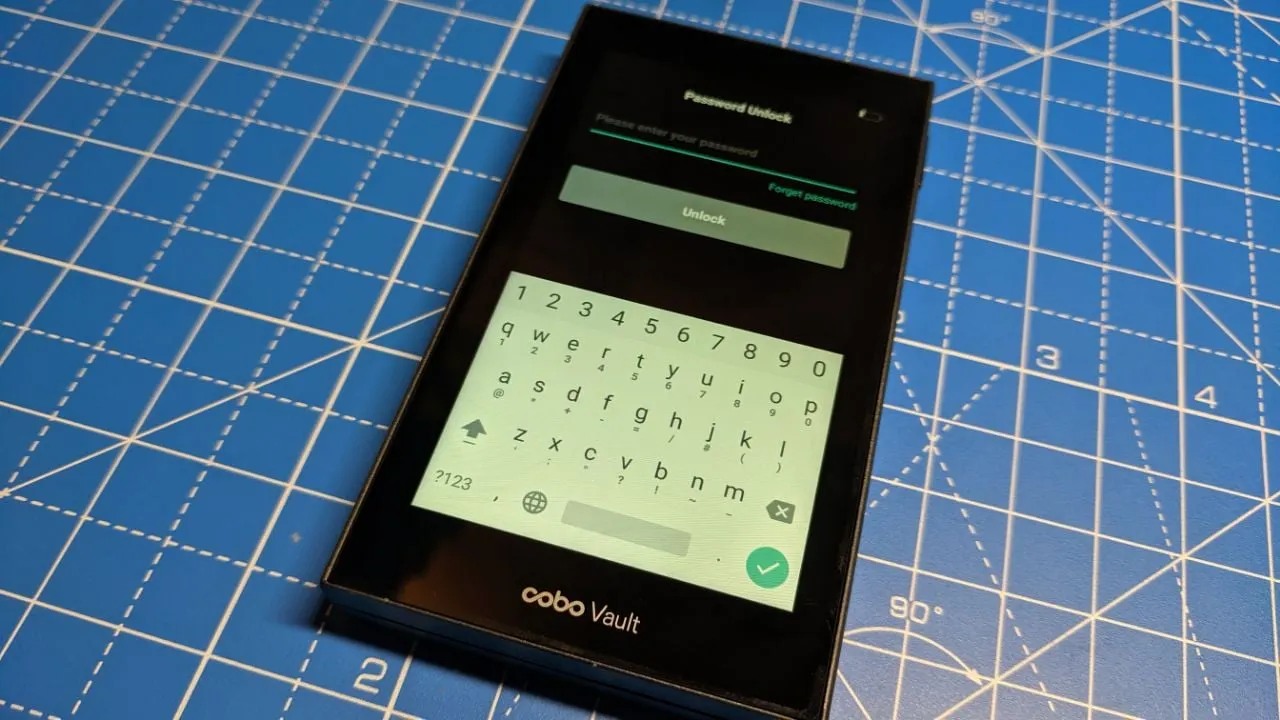
The Cobo Vault's USP is security, and Cobo really hasn't skimped in that regard. It's designed to keep the user's private keys safe from practically any conceivable threat. To help achieve this, Cobo has reduced potential attack surfaces down to an absolute minimum by forgoing Bluetooth and USB connectivity, protecting the Vault against man-in-the-middle and side-channel attacks.
Like many other hardware wallets, including the Ledger Nano X and D'CENT Biometric Wallet, the foundation of the Cobo Vault's security is a secure element. Unlike other hardware wallets, the Cobo Vault's secure element is open source and has been graded FIPS 140-2 for security.
Access to the Cobo Vault is restricted by an up to 30 character long password and optional pattern code. Cobo Vault prevents the password from being brute-forced by adding an incrementally increasing lockout period, which delays subsequent password attempts.
Beyond this, the Cobo Vault also includes a so-called "self destruct" function, which will automatically wipe the secure element if an attacker attempts to open the body of the device. Owners can also create additional hidden vaults on their devices by creating a unique passcode for each.
The Cobo Vault doesn't just provide security against attacks, it is also arguably the most physically durable cryptocurrency hardware wallet on the market today. The wallet is MIL-STD-810G certified for temperature and vibration resistance (among other things). It is also rated IK9 impact resistant, which means it can sustain survive an impact of 10 joules of impact force.
Cobo Vault Wallet review: Verdict
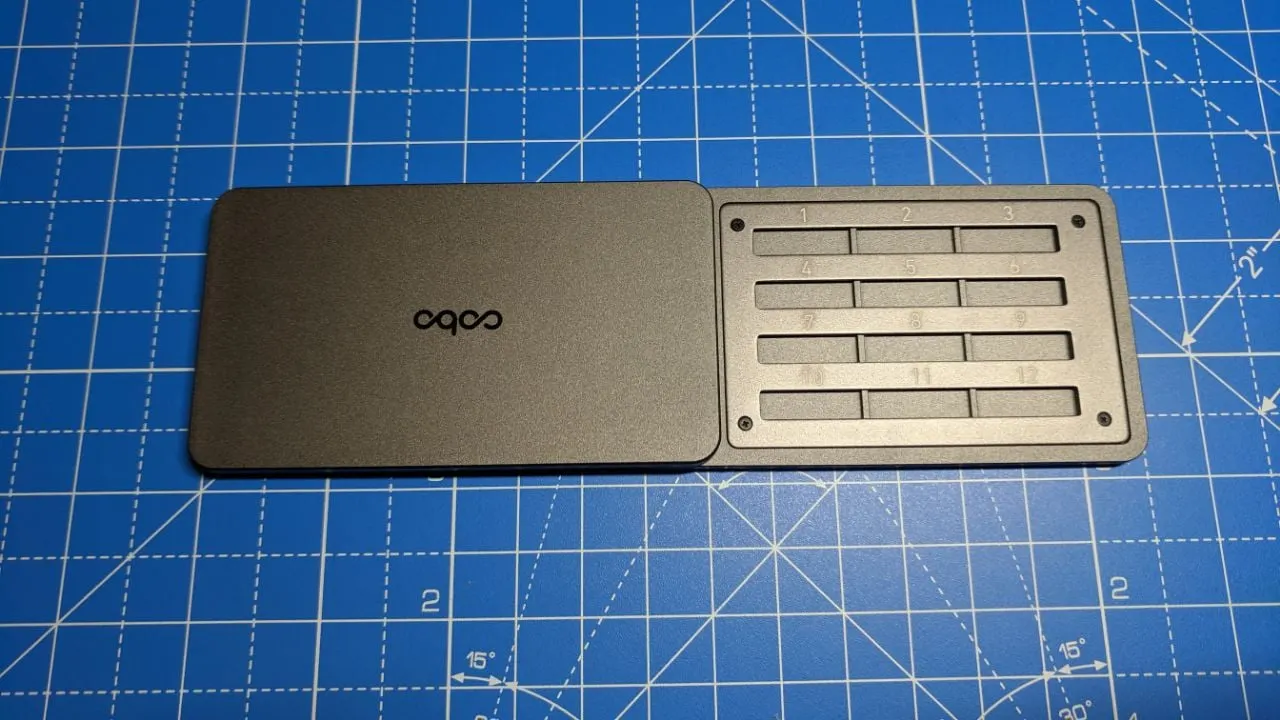
The Cobo Vault is among the safest hardware wallets available, thanks to its built-in secure element, tamper-proof design, and extreme damage resistance. It's also intuitive to use, despite its security protocols adding additional steps to the transaction signing process.
However, this level of security comes at a steep cost—$479—and the Vault only supports a limited range of cryptocurrencies. As such, the device is suited to those who place a premium on security and are prepared to limit themselves to predominantly mainstream cryptocurrencies.
If you're prepared to pay the price for peace of mind, the Cobo Vault is an undeniably secure and simple way to store cryptocurrencies.

